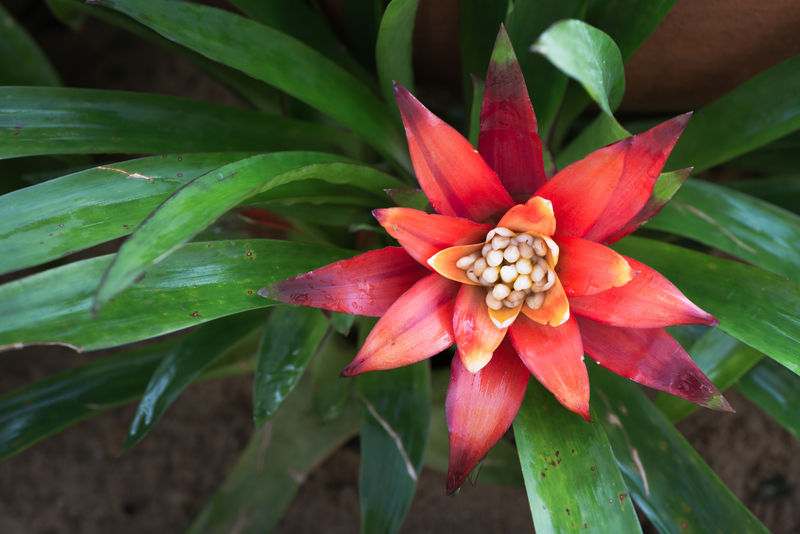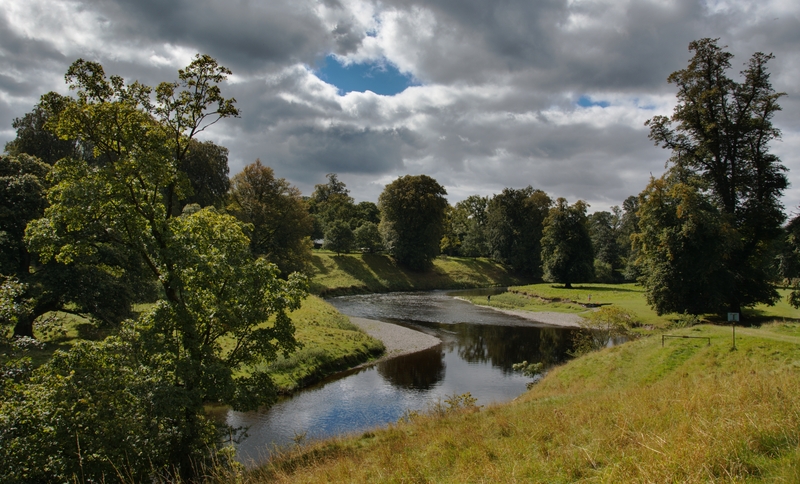Discover Key Weed Control Tips for Thriving Gardens
Posted on 21/06/2025
Discover Key Weed Control Tips for Thriving Gardens
A beautiful, bountiful garden doesn't happen by accident--it requires nurturing, attention, and effective weed control techniques. Weeds are one of the most persistent challenges gardeners face, stealing nutrients, light, and space from desirable plants. Understanding the best weed management strategies will empower gardeners to cultivate a vibrant, thriving haven. In this comprehensive article, we'll explore key weed control tips for flourishing gardens, discuss both organic and chemical solutions, and share expert guidance on sustainable weed prevention that keeps your landscape healthy season after season.
Why Weeds Are a Problem in the Garden
Weeds can quickly overtake your prized flowers, vegetables, and shrubs if left unchecked. They compete with other plants for water, sunlight, and soil nutrients, resulting in weaker and less productive crops. Additionally, some weeds harbor pests or diseases that can spread to your desired plants.
- Resource competition for nutrients, sun, and water.
- Allelopathy: Many weeds release chemicals that suppress garden plant growth.
- Harvest loss in vegetables due to stunted crop development.
- Diseases and pests harbored by certain weeds.
- Aesthetic problems in ornamental bedding and lawns.
Proactive and consistent weed management is essential for maintaining an attractive, productive garden.

Top Weed Control Strategies for a Thriving Garden
Let's dive into the best weed control tips to ensure your garden remains healthy and weed-free. Combining multiple techniques often yields the most effective results and minimizes the need for harsh chemicals.
1. Mulching: The Gardener's Secret Weapon
Mulching is one of the most effective and environmentally friendly weed control strategies. When properly applied, mulch acts as a barrier, blocking light from reaching the soil and inhibiting weed seed germination.
- Organic mulches: Wood chips, straw, shredded leaves, grass clippings, and compost. These also improve soil health as they decompose.
- Inorganic mulches: Landscape fabric, black plastic, or gravel. These offer longer-lasting weed suppression but may not enrich the soil.
Apply a layer of mulch 2-4 inches thick, being careful to keep it a few inches away from plant stems. Refresh organic mulch annually to maintain effective coverage.
2. Manual Weed Removal: The Tried-and-True Method
Sometimes, nothing replaces good old-fashioned hand weeding. Manually removing weeds--roots and all--prevents regrowth and protects your preferred plants from competition.
- Weed early and often--young weeds are easier to pull before they establish deep roots.
- Moisten the soil before weeding to make root removal easier.
- Use quality weeding tools such as hoes, trowels, or fishtail weeders for efficiency.
- Dispose carefully to prevent reseeding.
Persistent hand weeding keeps weed populations in check and is especially useful in small beds or near seedlings.
3. Proper Plant Spacing and Dense Plantings
Thick plantings create natural shade, which suppresses weeds by minimizing soil exposure to sunlight. Consider these techniques:
- Crowd out weeds with dense groundcovers such as creeping thyme, sedum, or low-growing annuals.
- Use succession planting in vegetable gardens to cover bare soil.
- Practice companion planting to maximize space and resource use.
Healthy, lush plant cover leaves little room for weeds to establish and thrive.
4. Water Wisely to Outcompete Weeds
Targeted irrigation encourages vigorous plant growth while depriving weeds of essential moisture. Drip irrigation or soaker hoses deliver water directly to plant roots, rather than wetting wide areas where weed seeds lie dormant.
- Avoid overhead watering that encourages weed germination.
- Water deeply but infrequently to promote deep-rooted, resilient plants.
5. Prevent Weeds Before They Start
Proactive weed prevention is far more manageable than tackling a full-blown infestation. Here's how to stay ahead:
- Inspect new plants and soil for weed seeds before introducing them to your garden.
- Address border and edge weeds swiftly before they spread.
- Monitor beds after storms or disturbances, when weeds are most likely to appear.
- Keep lawn edges well-maintained to create a buffer zone against invasive weeds.
Alternative and Organic Weed Control Methods
For gardeners seeking environmentally-friendly strategies, many organic weed control options are readily available:
6. Solarization
Solarization uses the sun's energy to kill weed seeds and pathogens in the soil. Simply cover moist garden beds with clear plastic sheeting for 4-6 weeks during the hottest part of the year. This technique can reduce weed pressure for an entire growing season.
7. Vinegar and Boiling Water
Household vinegar or boiling water can be effective for spot-treating young weeds on paths or driveways. Exercise caution: These methods also kill nearby desirable plants, so apply directly and precisely.
8. Corn Gluten Meal
This natural pre-emergent weed suppressant prevents seed germination. Apply corn gluten meal in early spring before weeds emerge. Take care if you're seeding lawns or gardens, as it can also inhibit crop seeds.
9. Flame Weeding
Propane torches, or flame weeders, are used to quickly wilt and kill weeds in gravel paths or between pavers. Use responsibly, as this method involves open flames.
10. Cultivation
Shallow cultivation with a hoe or stirrup tool is excellent for uprooting young weeds before they become established. Timing is important: cultivating when the soil is dry reduces the risk of re-rooting.
Chemical Weed Control: When and How to Use Safely
While organic weed management is preferred by many, sometimes persistent or invasive weeds require chemical intervention. Use synthetic herbicides judiciously and only as a last resort. Consider the following:
- Choose selective herbicides that target specific weed types (broadleaf vs. grass) to minimize collateral damage.
- Read and follow label instructions to protect pollinators, pets, and desirable plants.
- Spot-treat instead of blanket applications.
- Wear protective gear and avoid spraying on windy days.
- Rotate herbicides if recurring weeds show resistance.
Note: Overuse of chemicals can disrupt garden ecosystems, so always use the minimum effective dose and incorporate preventative strategies for long-term success.
Common Types of Weeds and How to Control Them
Different weeds require different management strategies. Identifying the major weed types in your garden helps target your control efforts.
Annual Weeds
Complete their life cycle in one year. Examples: Chickweed, lamb's quarters, crabgrass.
- Control: Prevent seed production via timely weeding, mulching, and pre-emergent herbicides.
Perennial Weeds
Live for several years and spread via roots and seeds. Examples: Dandelions, bindweed, Canada thistle.
- Control: Remove the entire root system, use deep mulching, and consider spot-treating with herbicides if manual removal fails.
Biennial Weeds
Live for two years, forming rosettes in the first year and flowering in the second. Examples: Burdock, wild carrot.
- Control: Remove before flowering, or cut root below the crown to prevent regrowth.

Best Practices for Long-Term Weed Management
Sustainable garden weed control is not a one-time event but an ongoing process. Here are expert-recommended tips to ensure your garden remains a healthy, weed-resistant oasis:
- Be vigilant: Inspect gardens frequently for early weed growth.
- Practice crop rotation and soil amendments to encourage robust, resistant plants.
- Sharpen and clean tools regularly to reduce the spread of weed seeds and diseases.
- Educate yourself on local invasive species for better preparedness.
- Document problem areas seasonally to refine your control strategies.
Proactive Seasonal Checklist for Weed-Free Gardens
- Early Spring: Apply pre-emergent mulches or herbicides; remove winter weeds.
- Late Spring/Early Summer: Refresh mulch, scout for new weed growth, begin succession planting.
- Summer: Continue regular irrigation, hand weeding, and deadheading to prevent seed spread.
- Fall: Remove spent crops and debris, sow cover crops to suppress winter weeds.
- Winter: Inspect and plan for improvements to next season's weed management approach.
By following these seasonal steps, your garden will be equipped to fend off weed invasions year-round.
Embrace These Weed Control Tips for Garden Success
Thriving gardens start with proactive, integrated weed management. By implementing these key weed control tips, gardeners can reduce labor, minimize chemical inputs, and foster healthy, attractive landscapes. Remember, achieving a weed-free garden is a journey. Combine mulching, hand weeding, proper plant selection, and timely preventive measures for the greatest impact.
Whether you're a novice or master gardener, make weed control a regular habit--and watch your garden flourish season after season.
Frequently Asked Questions: Weed Control in Gardens
Q: What is the best mulch for weed suppression?A: Wood chips and shredded bark are excellent for ornamental beds, while straw works well in vegetable gardens. All organic mulches improve the soil as they break down.
Q: Why do weeds keep returning after I pull them?
A: If root fragments remain, many perennial weeds can regrow. Persistent hand-digging and mulching are needed, and severe infestations may require targeted chemical treatments.
Q: Are natural weed killers safe for edible gardens?
A: Organic solutions like vinegar, boiling water, and corn gluten meal are safer than synthetic herbicides, but still require careful use to avoid harming vegetables.
Q: How often should I mulch my garden?
A: Apply mulch every spring, and top it up as needed to maintain a 2-4 inch layer, ensuring effective weed control and moisture retention.
For more expert gardening advice and sustainable landscaping solutions, keep exploring our website. Here's to your weed-free, thriving garden!



